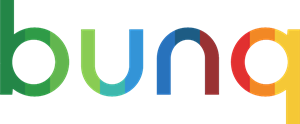The Best banking options in France explained
Your bank should meet your banking needs. Below are the procedures for picking the best bank in France. Comparing the specifics important to you is useful because only some financial organizations offer the same fees, interest rates, services, or even types of accounts.
List of internet providers in France
We have listed the most reliable Internet providers below while using the following criteria:

|
|
|
|
|---|---|---|
|
 |
Neobank with no withdrawal fees throughout Europe. Ideal bank if you travel a lot. Everything can be managed online. |
|
 |
‘Bank of the free’ with strong focus on the environment. For every amount you put in, they will plant a tree. A bit more expensive than N26, but better for the environment! |
|
 |
UK based bank with a lot of branches in Europe. Purely digital bank and everything can be handled online. |
|
 |
Largest bank in France. Traditional bank with a lot of brick and mortar stores throughout France. This is the best bank for you if you like your banking old style. |
|
First, think about your banking requirements.
A bank is similar to a buffet in that you don’t necessarily need to eat everything on offer. Banks offer credit cards, loans, mortgages, and accounts for managing and saving money. The two most typical types of bank accounts are shown below:
Checking accounts are used for daily purchases. You can buy things, pay bills, send money online, get cash from ATMs, write checks, and more with debit cards. Savings accounts are used for making interest on short-term deposits. Money in this account is often needed within five years, as opposed to long-term savings, such as those for retirement, which are better suited for investing. Banks may restrict the number of withdrawals per month.
Identify the right account
French banks provide a wide range of goods and services, making it difficult to compare them all at once. Matching the appropriate account types to your financial priorities and goals is an excellent place to start. If you want to replace your checking account, choose a larger, more established bank that offers a variety of checking account options. Another option is to open a high-yield checking account, such as those that are frequently provided by some credit unions and internet banks.
Consider creating high-yield savings account if you want the best rate of return. In general, online banks offer better rates than traditional banks. Although the top banks pay up to 0.6 percent for savings accounts, the average APY is 0.06 percent. Another choice is money market accounts, which are comparable to savings accounts but may also allow check writing. Banks frequently offer debit or ATM cards, typically with a monthly transaction cap.
Know the banking experience required
Banks come in a variety of shapes and sizes. The neighborhood bank, an online-only bank, a not-for-profit organization, or a tech business with a mobile app may serve your financial requirements. But, they aren’t all made the same way or prioritize the same parts of banking, so weigh their advantages and disadvantages while choosing a free bank account in France. The following is a list of the main categories of banking institutions:
- Federal banks.
- Community and regional banks.
- Unions of credit.
- Bank websites.
National banks: These banks offer the broadest selection of accounts and loans in addition to typically top-notch mobile apps and websites. The majority of national banks are physical locations rather than online-only businesses; thus, their branch and ATM networks span many states and can accommodate in-person needs.
Regional and community banks: These banks tend to concentrate on particular geographic areas with branches and ATMs. They are well known for their relationship-based banking, particularly regarding mortgages and small business loans. They are smaller than national banks.
Credit unions: These non-profit banks emphasize individualized service and, on average, higher savings rates than commercial banks. Membership requirements vary among credit unions; some allow you to join by making a one-time payment to a nonprofit, while others demand that you reside in or work in a particular area.
Consider the convenience of a bank branch
Accessibility is another important feature of banking. Important factors to think about include the accessibility of online and mobile banking, the convenience of ATM and branch locations, and the availability of online and mobile banking. Your priorities will depend on your own preferences. Yet, according to J.D. Power, 78 percent of consumers claim they opened their most recent account or product in person in a branch, demonstrating the continued importance of branches in the lives of most customers. According to its statistics, consumers most frequently cited branch offices in handy locations because they chose a particular primary financial institution.
Examine digital features
Most banks allow customers to transfer money, pay bills, check balances, and deposit checks electronically through an app or website. Yet, not all banks provide cutting-edge digital capabilities.
Not all banks provide features customers increasingly seek, including the option to lock a debit card (and stop someone else from using it) or control mobile banking alerts. Also, not all online banks provide a smartphone app, so you might have to access your account using a mobile browser.
Conclusion:
Most banks offer comparable products. It’s crucial to inspect the terms and prices because each product’s distinctive features and specifics determine how they differ. Based on your goals and lifestyle, consider which bank to choose in France. It matters where you prefer to bank and how you handle your finances. Handling your money will be much easier if you find a bank that meets all your requirements and has lower fees.